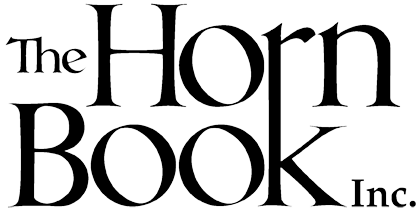I like to believe that over ten years of reading books aloud to children has provided me with a strong sense of the ones that will capture not just their attention but also (and perhaps more importantly) their hearts and minds.
 I like to believe that over ten years of reading books aloud to children has provided me with a strong sense of the ones that will capture not just their attention but also (and perhaps more importantly) their hearts and minds. The books they beg me to read again and again. The books that cause them to rise from their “criss-cross applesauce” positions, pressing their faces right up to the page so they can study the details. The books that rarely reside on our library shelves, because a child always spies them and swipes them off the shelving cart. I can almost always predict which books will earn this coveted attention and devotion, but sometimes a book surprises me.
I like to believe that over ten years of reading books aloud to children has provided me with a strong sense of the ones that will capture not just their attention but also (and perhaps more importantly) their hearts and minds. The books they beg me to read again and again. The books that cause them to rise from their “criss-cross applesauce” positions, pressing their faces right up to the page so they can study the details. The books that rarely reside on our library shelves, because a child always spies them and swipes them off the shelving cart. I can almost always predict which books will earn this coveted attention and devotion, but sometimes a book surprises me.Three years ago, I decided to share Virginia Lee Burton’s 1943 Caldecott winner The Little House with kindergartners. Though it is a beloved favorite of mine, the thought of reading it aloud to a group of squirrelly kindergartners made me a bit nervous. Gentle classics and attention spans of this generation’s media-saturated children don’t always coincide. To my delight and amazement, The Little House enthralled my students and, due to numerous requests, I read it again to the same groups of children just two weeks later.
The Little House experience occurred again last spring when I read aloud Sophie Blackall’s Hello Lighthouse. Would my deep love and admiration for the book be shared by a group of six-year-olds? I didn’t know what to expect. My internal dialogue during the first read-aloud best illustrates the children’s reaction: “Oh no, I think we only have one nonfiction book about lighthouses”; “I should be happy that my students are pointing out details that I had not previously noticed, right?”; and “Does sitting directly on top of my four-inch wedge sandals not hurt these children?”
In her 1943 Caldecott acceptance speech, Virginia Lee Burton said, “To return ... to the essential qualities of children’s picture books, one must strive to give children what they like and want, and I am convinced that they like and want the best qualities.” Sophie Blackall's Hello Lighthouse captures the hearts and affections of my students because it has the “best qualities” — and these best qualities make it worthy of the 2019 Caldecott Medal.
The first best quality in the book is the steadfast lighthouse. Like the house in The Little House, the sturdy and noble lighthouse remains unchanged amidst the tumult and change that occurs around it. Blackall positions the lighthouse in the exact same place on eight double-page spreads. Spouting whales, crashing waves, wind, fog, ice, pink sunsets, and various other weather elements give each spread a distinct look and feel, but the lighthouse remains unchanged. The lighthouse’s consistent placement and position, as well as its unchanging appearance, is in direct contrast with the fluctuating weather elements. Through this contrast, we see and understand the sea’s unpredictability, force, and wild beauty, as well as the need for the lighthouse to send “its light out to sea, guiding ships on their way.”
Another best quality is the masterful use of shape. Until Hello Lighthouse, I did not associate circles and lighthouses. But of course, the inside of a lighthouse is circular. Spreads inlaid with smaller, rope-framed circular illustrations; rooms decorated with round rugs and tables; a quilt with the friendship ring pattern — Blackall expertly executes the circle motif, and the effect is powerful. Now consider the book’s shape: like a lighthouse, it is tall and rectangular. Consider the design expertise needed to merge the lighthouse’s exterior height and shape with its circular interior. Circles are common in square-shaped books, but I have never seen them used with such perfection and efficacy in a tall, narrow portrait-shaped book.
A final best quality is the attention to detail evident in the Chinese ink and watercolor illustrations, as well as the book’s construction. The cutaway illustration of the lighthouse is informative, intricate, and the reason why my students felt the need to sit on my feet, pressing their faces close to the page. The lighthouse’s interior furnishings, the keeper’s uniform, the tender and its supplies, the logbook — the illustration details are historically accurate, adding a depth rarely seen in books for children. In the words of Burton: “[Children’s] perception is clear and sharp, perhaps more than ours. Little things interest them. No detail escapes them.” Every detail in Hello Lighthouse holds individual intrinsic interest and significance, yet also contributes to the book’s overarching design and story, as do the details of the book’s construction — the lighthouse on the spine, the informative endpapers, the additional illustrations under the jacket, and the unexpected single gatefold in the final pages. Yes, these details lift the book from a level of excellence to one of eminence, but more importantly they gift children with a sense of good design and an appreciation for beauty. This is how the picture book works. Once again, referring to the wisdom of Virginia Lee Burton,
“The basic things are always the most important, and good art, certainly a basic thing, impressed on young minds through the medium of children’s books is without doubt one of the best possible ways of giving children a true conception of the world they live in.”
Using pictures to tell the story of a steadfast lighthouse and its faithful keeper, Hello Lighthouse is a gift for children. Amid this world’s stormy seas, it is a beacon of light shining bright with truth, goodness, and beauty.
What do you think? Will 2019 be the year that Sophie Blackall joins the ranks of beloved illustrators, such as Robert McCloskey, Barbara Cooney, and Chris Van Allsburg (among others), who have received multiple Caldecott Medals?
[Read the Horn Book Magazine review of Hello Lighthouse here.]
says
says
says
says
says
Add Comment :-
RELATED
RECOMMENDED
ALREADY A SUBSCRIBER? LOG IN
We are currently offering this content for free. Sign up now to activate your personal profile, where you can save articles for future viewing.








